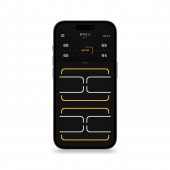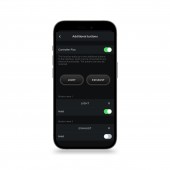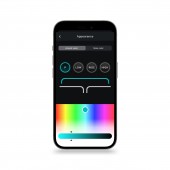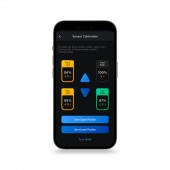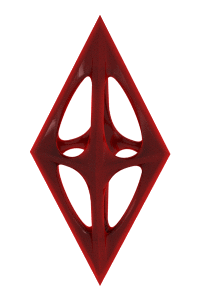
| THE AWARD |
| CATEGORIES |
| REGISTRATION |
| SUBMIT YOUR WORK |
| ENTRY INSTRUCTIONS |
| TERMS & CONDITIONS |
| PUBLICATIONS |
| DATES & FEES |
| METHODOLOGY |
| CONTACT |
| WINNERS |
| PRESS ROOM |
| GET INVOLVED |
| DESIGN PRIZE |
| DESIGN STORE |
| THE AWARD | JURY | CATEGORIES | REGISTRATION | PRESS | WINNERS | PUBLICATIONS | ENTRY INSTRUCTIONS |
Spec Air Air Suspension Management by Oleg Sukhorukov |
Home > Winners > Design #158385 >Interview |
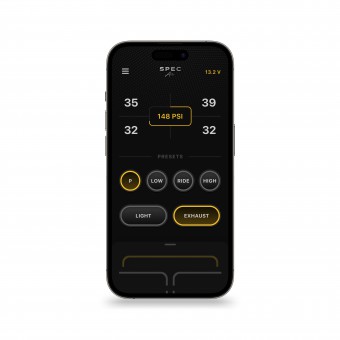 |
|
FS: What is the main principle, idea and inspiration behind your design?
OS: The main principle behind Spec Air Suspension Management is precision, control, and seamless user experience. I wanted to create a system that allows drivers to intuitively adjust their vehicle’s suspension without distractions or technical complexity. The inspiration came from professional-grade automotive controls – where tactile feedback, clear visual hierarchy, and reliability are key. The goal was to make air suspension adjustments feel effortless, whether for performance tuning or everyday driving.
FS: What has been your main focus in designing this work? Especially what did you want to achieve?
OS: My main focus was creating a balance between functionality and aesthetics. Many suspension controllers prioritize either technical depth or a simplified interface, but I wanted Spec Air to deliver both. The aim was to provide professional-level control while ensuring an intuitive, enjoyable user experience. I also paid special attention to the physical interaction – ensuring that both the mobile app and physical controller feel responsive, precise, and natural to use.
FS: What are your future plans for this award winning design?
OS: Future plans include refining the system’s adaptability by incorporating machine learning for predictive suspension adjustments. Another focus is expanding compatibility with a wider range of vehicles and platforms. Additionally, I’m exploring improved connectivity and integration with in-car systems, making Spec Air even more seamless for drivers who demand high-performance customization.
FS: How long did it take you to design this particular concept?
OS: The design process spanned nearly five years. It started as a concept aimed at solving real-world usability issues in suspension management, evolving through multiple iterations based on user feedback. Every stage – from interface refinements to the physical remote’s ergonomics – was shaped by practical testing and iterative design improvements.
FS: Why did you design this particular concept? Was this design commissioned or did you decide to pursuit an inspiration?
OS: This was a self-driven project based on both personal interest and an industry gap. Many existing solutions felt either too complex for everyday users or too basic for enthusiasts and professionals. I saw an opportunity to create a system that balances depth and ease of use, making high-precision suspension control accessible without compromising on performance.
FS: Is your design being produced or used by another company, or do you plan to sell or lease the production rights or do you intent to produce your work yourself?
OS: Currently, the system is in production and actively used by automotive enthusiasts and professionals. While I’m open to potential collaborations and licensing opportunities, the focus has been on refining and improving the product in-house to ensure the best user experience. Expanding distribution and optimizing the supply chain are key steps for the next phase of the project.
FS: What made you design this particular type of work?
OS: I wanted to solve a real problem. Many air suspension systems come with either outdated interfaces or lack intuitive control. My goal was to bridge that gap—creating a control system that provides both precision and ease of use. The idea stemmed from direct feedback from drivers and tuners who needed a better way to manage their vehicle’s suspension dynamically.
FS: Where there any other designs and/or designers that helped the influence the design of your work?
OS: Yes, I always analyze the best practices in automotive design, consumer electronics, and human-machine interfaces. While no single product directly influenced Spec Air, I took inspiration from professional motorsports controls, high-end industrial equipment, and even premium audio interfaces – where precision and tactile feedback matter. Additionally, feedback from engineers and real users played a huge role in shaping the design.
FS: Who is the target customer for his design?
OS: The target audience includes automotive enthusiasts, performance drivers, and professionals in the tuning and customization industry. The system is designed for those who demand both precision and ease of use, whether they are adjusting suspension settings for daily driving, track performance, or off-road conditions.
FS: What sets this design apart from other similar or resembling concepts?
OS: The key differentiator is the combination of high-performance functionality and an intuitive interface. Unlike many air suspension controllers that prioritize either simplicity or technical depth, Spec Air delivers both. The seamless integration of hardware and software, real-time responsiveness, and a user-focused control system make it stand out in the market.
FS: How did you come up with the name for this design? What does it mean?
OS: The name “Spec Air” reflects both precision (“Spec” as in specifications and fine-tuning) and the core functionality of air suspension. It conveys the idea of high-performance adjustability while keeping the branding clean and professional.
FS: Which design tools did you use when you were working on this project?
OS: I used a combination of design and engineering tools, including Figma for interface design, SolidWorks for 3D modeling, and Adobe Creative Suite for visual assets. Additionally, I relied on prototyping tools to refine both the UI and physical controller, ensuring that every interaction felt natural and precise.
FS: What is the most unique aspect of your design?
OS: The most unique aspect is the seamless user experience across both digital and physical controls. The ability to switch between a mobile app and a physical remote without any learning curve ensures that drivers always have full control over their suspension system in any scenario.
FS: Who did you collaborate with for this design? Did you work with people with technical / specialized skills?
OS: Yes, I collaborated with engineers specializing in automotive electronics, software developers working on real-time control algorithms, and industrial designers focused on the tactile feel of the remote. Their expertise was crucial in ensuring that every element – from wireless connectivity to button feedback—was optimized for performance and usability.
FS: What is the role of technology in this particular design?
OS: Technology is at the core of this system. From wireless connectivity to real-time data processing, every aspect of the design is built around providing a fast, responsive, and reliable suspension control experience. The integration of sensors, accelerometer data, and customizable driving profiles ensures that the system adapts dynamically to different driving conditions.
FS: Is your design influenced by data or analytical research in any way? What kind of research did you conduct for making this design?
OS: Yes, the design process was heavily influenced by real-world testing and user feedback. I analyzed data on suspension behavior across different vehicles, studied user pain points with existing systems, and conducted hands-on testing to refine control precision. Additionally, usability studies helped optimize the interface for quick and intuitive adjustments.
FS: What are some of the challenges you faced during the design/realization of your concept?
OS: One of the biggest challenges was ensuring that the wireless communication between the app and the control unit remained both secure and low-latency. Another challenge was designing a physical remote that provided satisfying tactile feedback while maintaining a sleek and compact form factor. Additionally, balancing technical depth with ease of use required multiple iterations and real-world testing.
FS: How did you decide to submit your design to an international design competition?
OS: After years of development and refinement, I wanted to validate the work on a global stage. A’Design Award provides an excellent platform to showcase innovative products, and I saw it as an opportunity to not only gain recognition but also connect with industry professionals and potential collaborators.
FS: What did you learn or how did you improve yourself during the designing of this work?
OS: This project reinforced the importance of iterative design and real-world testing. I also deepened my understanding of hardware-software integration and the nuances of user behavior in automotive control systems. Every challenge along the way pushed me to refine both my technical and design skills.
FS: Any other things you would like to cover that have not been covered in these questions?
OS: One aspect worth mentioning is the impact of user feedback throughout the development process. While the initial concept was strong, real-world insights helped shape many of the final design decisions. This project is a testament to the value of listening to users, understanding their needs, and continuously refining a product to ensure the best possible experience.
FS: Thank you for providing us with this opportunity to interview you.
A' Design Award and Competitions grants rights to press members and bloggers to use parts of this interview. This interview is provided as it is; DesignPRWire and A' Design Award and Competitions cannot be held responsible for the answers given by participating designers.
| SOCIAL |
| + Add to Likes / Favorites | Send to My Email | Comment | View Press-Release |

